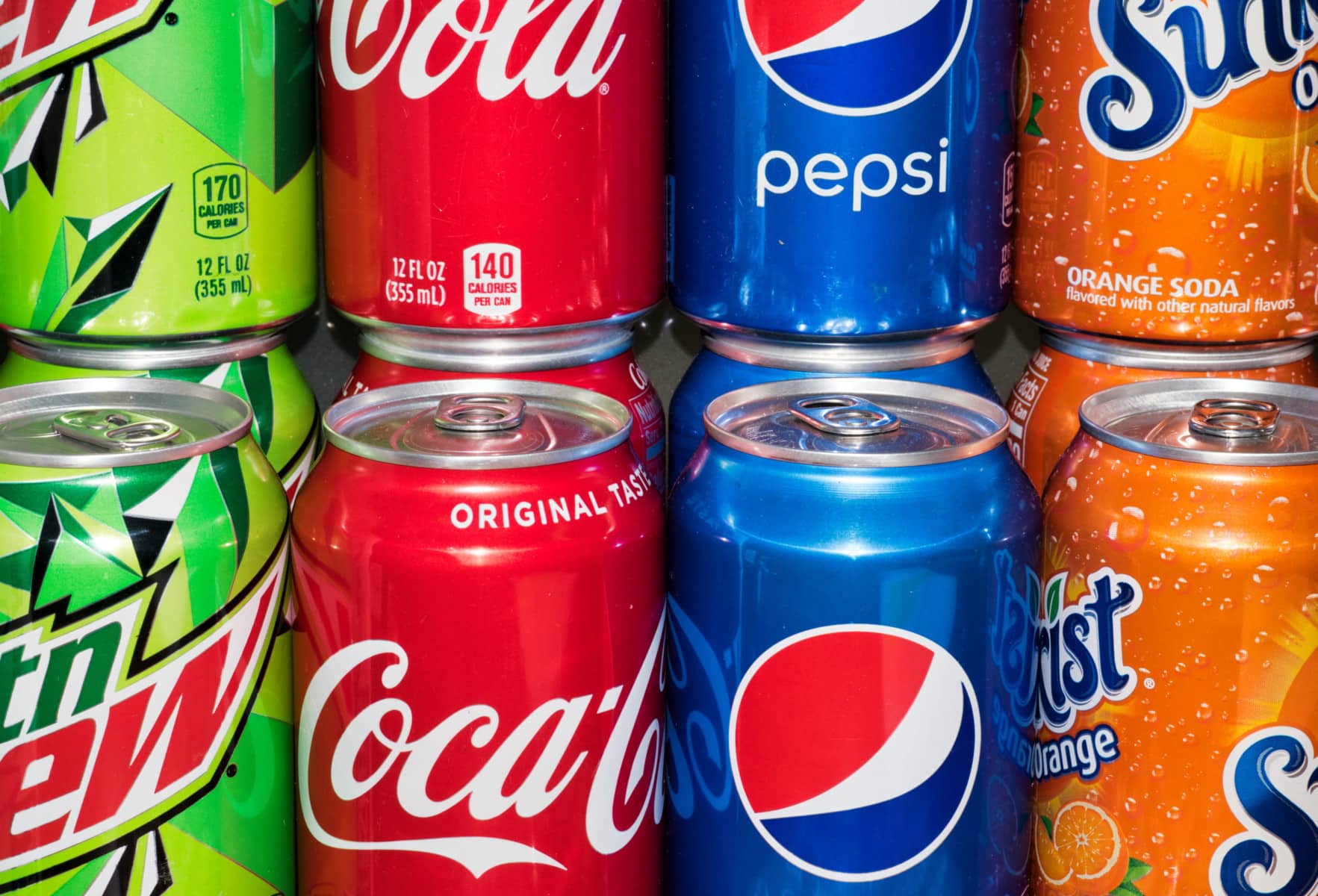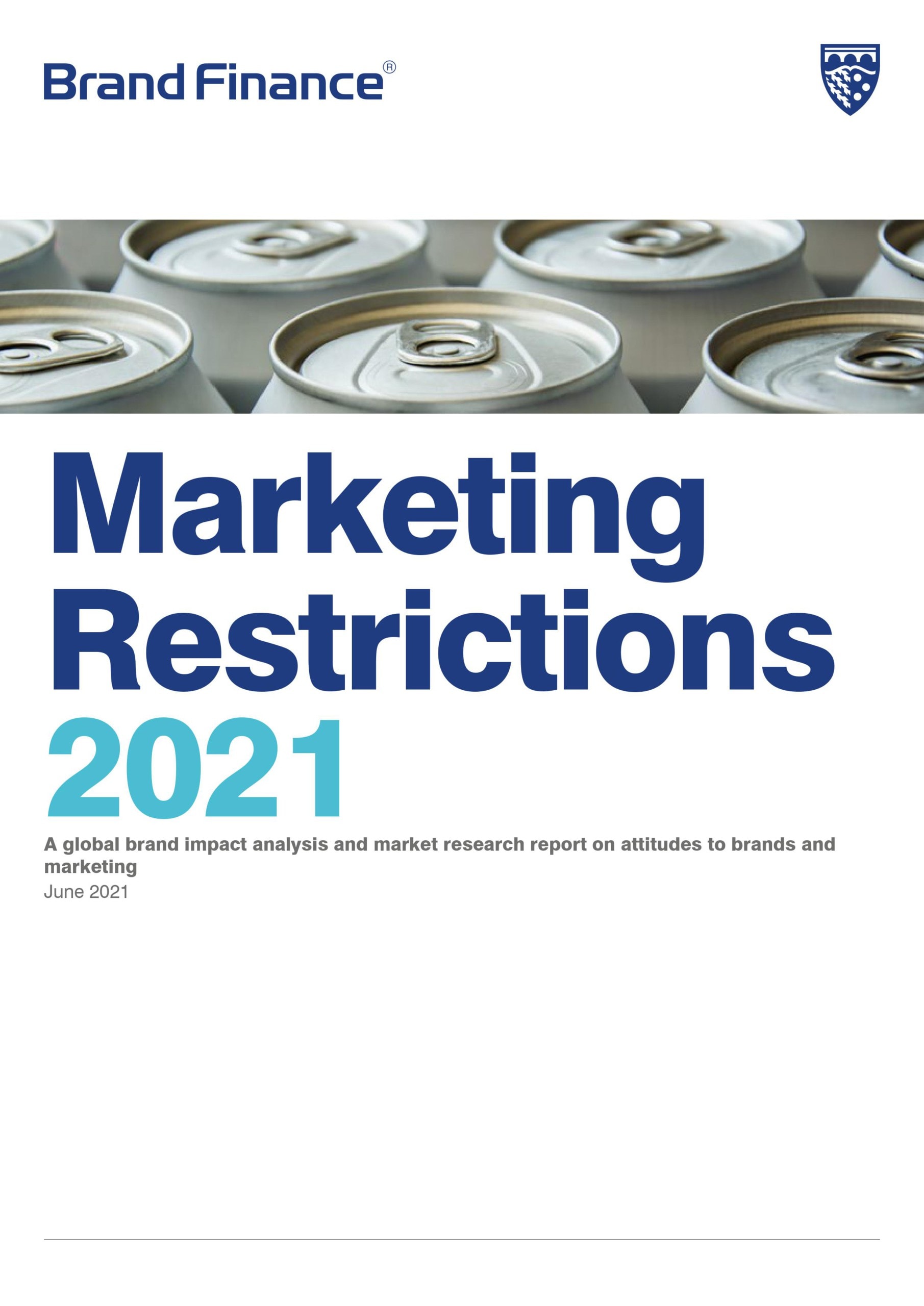The latest Brand Finance Marketing Restrictions 2021 report – building on the analysis conducted in 2017 and 2019 – estimates potential loss to businesses at over US$500 billion and seeks to understand popular attitudes to brands and marketing restrictions thanks to insights from an original global consumer survey and qualitative interviews with industry leaders.
Why publish a report now?
In November 2020, the UK government announced plans to enforce some of the most stringent marketing restrictions in the world for food and drinks – a total ban on the online advertising of so-called high fat, salt or sugar (HFSS) products.
This dumbfounded the advertising industry, with the likes of Kellogg's, Britvic, and Mars calling the restrictions "disproportionate and lacking in evidence".
This proposal is but one example of how global regulators are attempting to restrict the marketing freedoms of brand owners. Regulations which limit on-pack branding, mandate deliberately shocking health warnings, or demand punitive taxation are already commonplace.
The new plans come even though the food and drink industry is the largest manufacturing sector in the UK, worth more than £28bn to the economy and employing almost 500,000 people, and despite a direct appeal to the government from trade bodies that such a ban would "do untold harm to the UK's vitally important creative sector and food and drink businesses at an economically precarious time".
With the online advertising restrictions proposal now scaled down, in June 2021, the UK government announced plans to ban HFSS product advertising from being aired on TV before 9 pm in a bid to limit its exposure to children. In addition to these measures, the government issued a stark warning to advertisers: should the new regulations be met with defiance, authorities would introduce stronger statutory penalties, including civil sanctions and fines.

What marketing restrictions are already in place?
This is not a new phenomenon. In 2016, Public Health England released a report calling for the consideration of plain packaging for certain food and drink categories, with Transport for London – the network that operates all public transport across the capital with over 30 million journeys made each day – later banning HFFS food advertising completely in 2019.
In that same year, the Chilean government introduced a new food law banning the use of cartoon characters on children's cereal in an attempt to tackle the soaring obesity rates in the country, where currently over half of all six-year-olds are overweight or obese.
Ireland passed the Public Health (Alcohol) Act in October 2018, thereby stipulating a minimum price per gram of alcohol, making the inclusion of health warnings on packaging compulsory (including links to cancer), and implementing restrictions concerning the advertising and sponsorship of alcohol products.
Alcohol is an integral part of many cultures all over the world. Despite the country's well-known wine industry, alcohol marketing is even regulated in France. French law prohibits alcohol ads on television and in movie theatres, and where alcohol advertising is permitted, it must have a warning that consumption is harmful to one's health.
What are marketing restrictions?
Marketing restrictions are any regulations placed upon legal products relating to expression of brand identity and promotion to customers. Marketing restrictions can range from introduction of rules around advertising, imposition of targeted taxation, requirement of health warnings, to interference in visual branding, all the way to plain packaging.
Aside from tobacco – where stringent restrictions have been rolled out in many markets globally – food and drink brands operating in segments that are deemed unhealthy are at high risk of being impacted by marketing restrictions: alcohol, HFFS foods (sugary drinks, confectionery, savoury snacks), and fast-food restaurants. The gambling sector is subject to various marketing restrictions too, and increasingly, there has been debate about extending marketing restrictions to other brand categories, including autos and airlines, which are considered bad for the environment.
One of the most extreme marketing restrictions is plain packaging. Often referred to as a ‘branding ban’, where legislators require producers to remove all branded features from packaging, except for the brand name in a standardized font, with all surfaces in a pre-determined colour.
In 2012, Australia became the first country in the world to implement plain packaging for tobacco products. Since then, Israel, Saudi Arabia, Canada, Thailand, New Zealand, and the UK, as well as several EU countries, have followed suit.
The controversy and debate surrounding plain packaging are rife. Supporters claim that by removing visual cues, plain packaging deters consumers from making poor product choices, leading to better health outcomes.
The arguments against marketing restrictions
Opponents argue that plain packaging has not reduced smoking rates and that the removal of branding has led to commoditization, with incumbent brands losing market share to cheaper alternatives. This, they say, means it has not led to better health outcomes.
Furthermore, they claim it has fuelled an increase in illegal trade and boosted profits for criminals. In Australia, for example, reports have suggested that illicitly sold tobacco represents 14% of the total tobacco market, costing the Australian economy up to AUS$2 billion a year.
A collaborative study conducted in 2020 by Glasgow Caledonian University and the University of Stirling found that while plain packaging increased warning recognition and decreased product and consumer-based ratings for alcohol, bigger labels with combined text and image warnings were more successful in changing consumer behaviours. Despite these findings, however, warning labels, in general, lacked effectiveness, with only 7% of participants reporting a change in behaviour after reading alcohol warnings on packaging.
Despite the ongoing disagreement, it appears as though plain packaging in the tobacco sector may have set legislators on a slippery slope that could see more products subject to similar measures. Alcohol, confectionery, savoury snacks, and sugary drinks can all lead to adverse health effects, and their prevalence and promotion are coming increasingly under intense scrutiny.
For example, in June 2019, a UK think tank known as the Institute for Public Policy Research called for an extension of plain packaging to all confectionery, crisps, and sugary drinks to put them on a 'level playing field with fruit and vegetables’. According to Action on Sugar's 'Children's Plain Packaging' report, half of all food and drinks brands that use cartoon animations on their packaging are considered HFSS.
In the past, food and drink producers distanced themselves from tobacco on the basis that if consumed in moderation, their products were not harmful. But obesity, and particularly childhood obesity, is commonplace and rates are continuing to rise exponentially, primarily in the Western World.
Governments globally have started the crackdown on HFSS products through the combination of marketing restrictions and the introduction of sugar taxes. Denmark has had a tax on sugary drinks since the 1930s. Since then, Ireland, France, South Africa, Philippines, Hungary, Norway, Chile, the UK, Mexico, Brunei, Thailand, Saudi Arabia, the UAE, and two cities in the US: Berkeley and Philadelphia, have followed in the Danes' footsteps. Most recently, Malaysia, where the obesity epidemic swallows 19% of the national health budget, has introduced the tax.
The introduction of sugar taxes has led to some companies reducing the overall sugar levels in their products. In the UK, for example, where the government introduced a sugar tax in 2018, AG Barr, which owns the Scottish drink Irn-Bru, stopped producing the original full-sugar version. However, there is no evidence to prove that sugar taxes have reduced obesity levels in the countries implementing them.

Why debate marketing restrictions?
Marketing restrictions are not costless. They can be harmful not only to brands but also to supply chain businesses and consumers. It is essential then, to raise awareness about the breadth and scale of the threat so that brand owners can act in time to defend their interests and ensure that the public debate is balanced.
All responsible brand owners agree that authorities should stamp out false and misleading claims by producers, but ramping up marketing restrictions, without consideration of the benefits of brands and marketing, is a mistake. Brands drive innovation and are a mark of quality that helps consumers make informed choices. Brands support important social causes and help bring about change. Brands are the backbone of the global economy, especially in times of crisis.
Marketing restrictions damage businesses, mostly by driving a greater commoditization of products, reducing brand value, and causing loss of market share from incumbent brands to cheaper alternatives. Additionally, marketing restrictions negatively impact supply chain business, such as in advertising, packaging, marketing, communications, and the media.
These regulations can take on many forms, from limitations on how products are advertised – such as the broadcast time of commercials or use of outdoor spaces – to increased taxation and bans on certain visual aspects, like requiring brands to include warning labels on products to highlight their health and environmental impact.
Some controls go further, especially constraints on packaging design and branding. Apart from causing damage to brand owners and associated industries, such restrictions undermine consumer’s rights to make informed choices for themselves and their families.
Extreme marketing restrictions also enable illegal trade, which inflicts further damage upon industries by destroying brands and damaging consumer trust by paradoxically removing the quality control offered by brands, and boosting the profits available to unscrupulous criminals.

